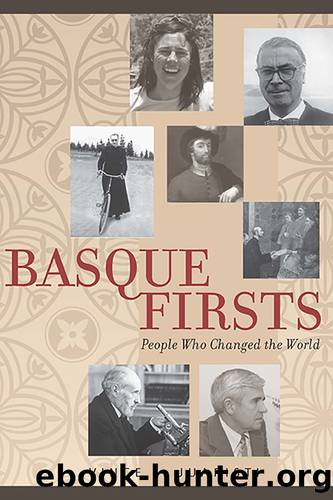Basque Firsts by Juaristi Vince J.;

Author:Juaristi, Vince J.; [Juaristi, Vince J.]
Language: eng
Format: epub
Publisher: University of Nevada Press
IN AUGUST 1971, Balenciaga at age 76 gave his first official interview to the London Times. âNobody knows what a hard métier it is, how killing is the work under all this luxury and glamour,â he said. Three years had passed since closing his salons and his sense about haute coutureâs doom had come to pass. âThis age is marked by the lack of elegance in women,â he said. âThe life which supported couture is finished. Real couture is a luxury which is just impossible to do anymore.â The British magazine Queen took another step when it reported, âHaute Couture is dead and so is Balenciaga.â
He did not return to fashion as a career. Occasionally, while dining with a friend, he would comment on his suit or her dress. The fabric is fine, heâd say, but the sleeveâdear Lordâthe sleeve! Then heâd go to his apartment with the offending friend in tow, stand on a stool with scissors, and dismantle and reassemble the sleeve. He was a perfectionist, an artisan who believed that creation was divine, and to fit divinely was godliness.
On only one other occasion would he pick up his scissors again. In March 1972, General Francoâs granddaughter, MarÃa del Carmen MartÃnez-Boriú y Franco, married Alfonso de Bourbon y Dampierre, the grandson of Alfonso XIII. The wedding gown was regal, fit for a queen, reminiscent of Isabelleâs Catholic glories. It would be one of his finest creations, and it had to be perfect. âTwo days before the wedding,â said the bride, âhe pulled the dress completely apart because he didnât like the way it fit. I thought Iâd never get married.â But her dress felt different from Fabiolaâs dress in 1960. The fanfare had gone. If Fabiolaâs dress had been a bold statement, MarÃa del Carmenâs felt more like a soft echo.
The dress would be Balenciagaâs last. Two weeks later, on a trip with Esparza to Javea, Spain, a coastal town on the Mediterranean Sea, a sudden heart attack ended his life on March 23, 1972. Within 24 hours, in accordance with Spanish law, he was buried in Getariaâs town cemetery. Father Pieplu, his priest from Paris where he had attended mass, delivered the eulogy, wearing a brilliant black-buttoned cassock that Balenciaga had made for him. Womenâs Wear Daily headlined, The King is Dead, and all the fashion industry and the women whom he had dressed mourned the death of a legend and the passing of an era.
Esparza suffered thereafter since Balenciaga had not left a will. Having spent every moment of the past 20 years with him, Esparza sued the family for at least part of the Balenciagaâs estate. He failed and went on to live a modest life until his death in 1997.
After Balenciaga closed his salons in 1968, Florette worked for Givenchy and then Courréges, her black book of clients worth a fortune in the fashion world. She never tired of representing the last gasps of haute couture. At 90 years old, she sold a few
Download
This site does not store any files on its server. We only index and link to content provided by other sites. Please contact the content providers to delete copyright contents if any and email us, we'll remove relevant links or contents immediately.
| France | Germany |
| Great Britain | Greece |
| Italy | Rome |
| Russia | Spain & Portugal |
Fanny Burney by Claire Harman(26531)
Empire of the Sikhs by Patwant Singh(22982)
Out of India by Michael Foss(16793)
Leonardo da Vinci by Walter Isaacson(13190)
Small Great Things by Jodi Picoult(7024)
The Six Wives Of Henry VIII (WOMEN IN HISTORY) by Fraser Antonia(5401)
The Wind in My Hair by Masih Alinejad(5036)
A Higher Loyalty: Truth, Lies, and Leadership by James Comey(4851)
The Lonely City by Olivia Laing(4751)
The Crown by Robert Lacey(4732)
Millionaire: The Philanderer, Gambler, and Duelist Who Invented Modern Finance by Janet Gleeson(4386)
The Iron Duke by The Iron Duke(4294)
Papillon (English) by Henri Charrière(4199)
Sticky Fingers by Joe Hagan(4106)
Joan of Arc by Mary Gordon(4023)
Alive: The Story of the Andes Survivors by Piers Paul Read(3970)
Stalin by Stephen Kotkin(3885)
Aleister Crowley: The Biography by Tobias Churton(3589)
Ants Among Elephants by Sujatha Gidla(3417)
